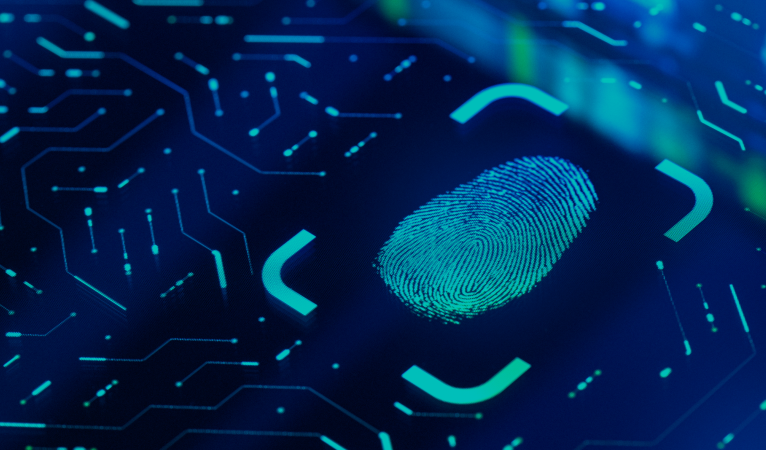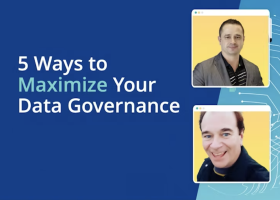What Is Data Security?
Data security is the collection of processes, policies, and technology used to ensure that data is secure and protected from unauthorized access, destruction, modification, or disclosure—malicious and accidental.
These protective measures preserve data confidentiality, integrity, and availability. Core components of data security include administrative controls, physical security, logical controls, organizational programs, rules, and processes.

Data security must, on one hand, protect data and, on the other, allow it to be used. A complex part of IT, data security must maintain a difficult balance between controlling and supporting the data activities and requirements of three key constituents:
1. Data owners (e.g., companies, individuals)
2. Industry and government regulators (e.g., Department of Homeland Security, PCI Industry Security Standards Council)
3. Data users (e.g., businesses, government agencies)
A model known as the CIA triad, confidentiality, integrity, and availability, is a commonly used data security framework. It governs how data is managed when it is processed, stored, and moved.
- Confidentiality
Ensures that only authorized, authenticated people, systems, and software have access to sensitive data - Integrity
Protects data from unintentional or deliberate modification by unauthorized users - Availability
Provides access to data when and where it is needed, including from an archive in the event that a recovery is needed
Why Data Security Is Important
There are innumerable reasons why data security is important. Following are several of the most commonly cited reasons.
- Protect sensitive digital assets
Data is at the core of any organization. Protecting digital assets, such as intellectual property and trade secrets, is vital as they differentiate an organization as well as its products and services. Unauthorized access to digital assets, whether accidental or malicious, can have dire consequences. - Adhere to government, industry, and internal compliance requirements
Failing to meet compliance requirements has significant repercussions, including fines, suspension of licenses, and loss of ability to process credit cards. Most organizations are subject to multiple regulations, most of which have specific data security requirements. - Meet customers’ expectations and protect the organizations’ reputation
A data breach can lead to customer churn as well as irreparable damage to brand reputation—for the organization and its leadership team. When a data breach occurs, there is an erosion of trust, especially when individuals’ sensitive information is compromised. - Prevent disruptions to operations
Lost, stolen, modified, or maliciously encrypted (i.e., ransomware) data can cause disruptions that impact productivity and grind operations to a halt at worst. In addition, time spent recovering from a breach in data security takes up an IT team’s limited time and resources. - Avoid financial loss
Fines and lost revenue can be surprisingly high. Add to this the cost of lost productivity, and it can be a crushing blow to organizations, a number of which will not be able to sustain it.
Types of Data Security
There are many types of data security, each designed to provide protection from a variety of threats across a range of users, devices, and applications. Since no one solution can address all data security requirements, different types of data security are used together to mitigate risk and prevent attacks. Among the types of data security most commonly used are the following:
- Proactive data security that tracks known threats and vulnerabilities and then scans to detect and deter them before they can be used for an exploit. These include:
- Anti-virus, anti-malware protection
- Email security
- Endpoint protection, endpoint security
- URL filtering
- Vulnerability assessment tools
- Preventative data security that provides protection from threats, including:
- Backup
- Data encryption
- Data erasure
- Data masking
- Education
- Data security management systems support the administration of broad protection across users, applications, hardware, and connected devices. These systems include:
- Identity and access management (IAM solutions)
- Multi-factor authentication (MFA)
- Patch management tools
- Data Loss Prevention (DLP)
Data Security Solutions
An effective data security program begins with taking a holistic view of the threat landscape—from laptops and routers to SaaS services and cloud computing resources. Each of these poses a risk to data security, but they must be considered collectively. Data security is complex, requiring a number of solutions to be integrated to maximize protection. Following is a review of the core data security solutions that most organizations need to protect data.
- Anti-virus, anti-malware protection
A multi-layered approach that detects malware (or viruses), prevents it from doing damage, and removes it. Sophisticated anti-malware solutions incorporate artificial intelligence (AI), machine learning (ML), and behavioral analytics to identify known and unknown threats (i.e., zero-day attacks). - Backup
Systems that are used to create and store copies of data that can be accessed in the event that the original data is compromised, damaged, stolen, or lost. - Data encryption
The processes that are used to encode data in transit or at rest. Data encryption solutions use algorithms that make the data impossible to read without having the decryption key. It can be used to protect individual files, folders, or disks (i.e., full-disk encryption). The most commonly used type of encryption is AES-256, which is considered to be military-grade. - Data erasure
A method of protecting data from unauthorized access by systematically erasing it when it is no longer needed. - Data Loss Prevention (DLP)
A technology that is used to prevent specific data from leaks or unauthorized access due to user negligence, mishandling of data, or malicious intent. DLP solutions enforce data use and handling policies based on a set of predefined security rules. - Data masking
A method of hiding original data by modifying it in a way that renders it unidentifiable without being decoded. Data masking techniques include encryption, scrambling, nulling out, substitution, shuffling, data aging, and number/date variance. - Education
Cybersecurity awareness training is a powerful data security tactic. Many consider education a way to turn people into “human firewalls.” Common educational topics include how to detect and avoid falling victim to phishing attacks, email spoofing, domain hijacking, ransomware attacks, social engineering, and best practices for overall data security. - Email security
A collection of safeguards is included in email security to protect data in email from unauthorized access, compromise, or data loss, including internal threats and malicious attacks. Email security can include spam filters, anti-virus, and data encryption. - Endpoint protection, endpoint security
A defensive data security solution, endpoint protection secures entry points of a network, such as desktops, laptops, or mobile devices. Endpoint security services include email filtering, web filtering, and firewalls. - Identity and access management (IAM)
Systems that manage data access permissions based on users’ data requirements. IAM is often used to limit users’ access based on the minimum required for their job role (i.e., the principle of least privilege, zero-trust model). - Multi-factor authentication (MFA)
The most secure type of authentication limits users’ access by requiring them to submit two or more verification factors in an authentication mechanism, such as what the user knows (e.g., password), has (e.g., security token), and/or is (e.g., biometrics). - Patch management tools
Automated patch management ensures that software is kept up to date and vulnerabilities are neutralized. Patch management tools identify, download, test, install, and verify software patches for systems and applications. - URL filtering
A solution that blocks access to known malicious websites, which helps to prevent phishing attacks by preventing users from reaching them. - Vulnerability assessment tools
Automated processes that search for known weaknesses, including outdated software, unapplied patches, gaps in network controls, or application vulnerabilities.
Data Security Strategies
Data security can be implemented in a number of ways. When creating a plan for a new data security implementation or upgrading an existing one, the first step is a needs assessment that takes into account the following considerations.
- What types of data need to be protected?
- How much of the data is sensitive information?
- Where does the data reside?
- Why does the data need to be protected?
- Does the data security strategy need to meet regulatory requirements?
- How long does data need to be retained?
- Does the data security plan need to include data lifecycle management and/or data governance?
- Are there any known data security threats or risks?
Once an assessment has been completed, the process and tactics of data security strategies should be evaluated. A complete data security strategy will include many types of solutions to provide sufficient protection, as noted in the previous section. Following are several key processes and tactics that are included in an effective data security strategy.
- Data discovery and classification
This should be baked into any data security strategy as an ongoing process. It should provide a full view of the data that an organization creates, collects, stores, and uses. Additionally, data should be classified according to its level of sensitivity (e.g., low, medium, high, restricted). - Data lifecycle management (DLM)
At the heart of data security are confidentiality, integrity, and availability, the CIA triad. Data lifecycle management supports data security from creation or acquisition through destruction, encompassing the five stages in the lifecycle—creation, utilization, sharing, storage, and deletion. Through each of these stages, data lifecycle management supports data security with policies that control data protection, resiliency, and regulatory compliance. - Data resilience
Creating protected backups is a critical part of any data security strategy. In the event of a data security incident or accident, data backups can be used to recover from data loss, such as a ransomware attack, stolen or corrupted data, or intentionally or accidentally deleted data. - Data governance and data management
Data security is also supported by data governance, which establishes policies and procedures around data, and data management, and informs which groups enact those policies and procedures. Each encompasses facets of data security and helps to ensure that data is appropriately protected and classified to minimize risk and ensure resiliency.
Data Security Trends
Trends are evolving rapidly in the sprawling area of data security. Four of the biggest data security trends relate to AI, IoT, ransomware, and the zero-trust security model.
1. Artificial Intelligence (AI)
The role of AI in data security continues to grow. As compute power increases and becomes more accessible, AI is being embedded into many data security solutions. One of the primary uses for AI in data security is to identify patterns of behavior that are out of sync with baselines, by processing thousands of events a second.
Anomalies in behavior are often one of the first indicators of a data breach attempt. Additionally, the predictive powers of AI allow data security solutions to take proactive measures to combat attacks.
2. Internet of Things (IoT)
Attacks on IoT devices as a means to access networks remain on an upward trend. Despite warnings, IoT devices continue to be a weak link in data security programs. The sheer number and vulnerability of IoT devices make them enticing targets for attackers.
More than other software, IoT devices have unpatched vulnerabilities that are easily exploited to access networks and compromise data security.
3. Ransomware
The relative simplicity of ransomware fuels its growth as a preferred attack by cybercriminals. Ransomware attacks have successfully compromised organizations of all sizes, and the number of attacks is on the rise.
Without recovery systems in place, many organizations forgo the advice of data security experts and law enforcement and pay the ransom. The efficacy of ransomware attacks and the ability to collect a ransom in difficult-to-trace cryptocurrency makes ransomware a serious threat to data security for the foreseeable future.
4. Zero-trust model
The zero-trust model takes a different approach from traditional data security strategies that are based on perimeter defense (i.e., the proverbial castle and moat approach). The zero-trust model is decentralized and brings defense down to the user and device level.
Network access is restricted based on need rather than giving default access after initial validation. At every access point, enhanced authentication (i.e., multi-factor authentication) is used to validate users and their devices.
Data Security for Organizational Security
No organization is safe without data security. Since every organization creates, collects, stores, and uses information, data security is an unavoidable requirement. The degree to which data security is implemented will vary greatly based on the organization, as many factors determine what level of data security is appropriate.
The good news is that data security solutions and services abound. Regardless of the organization, there are purpose-built solutions to address most every need. Before investing in data security, take time to understand and define requirements and gain a firm grasp of your organizations’ data. This will ensure that the data security program and solutions maintain the delicate balance between data usage and protection.
Egnyte has experts ready to answer your questions. For more than a decade, Egnyte has helped more than 16,000 customers with millions of customers worldwide.
Last Updated: 19th April, 2022




